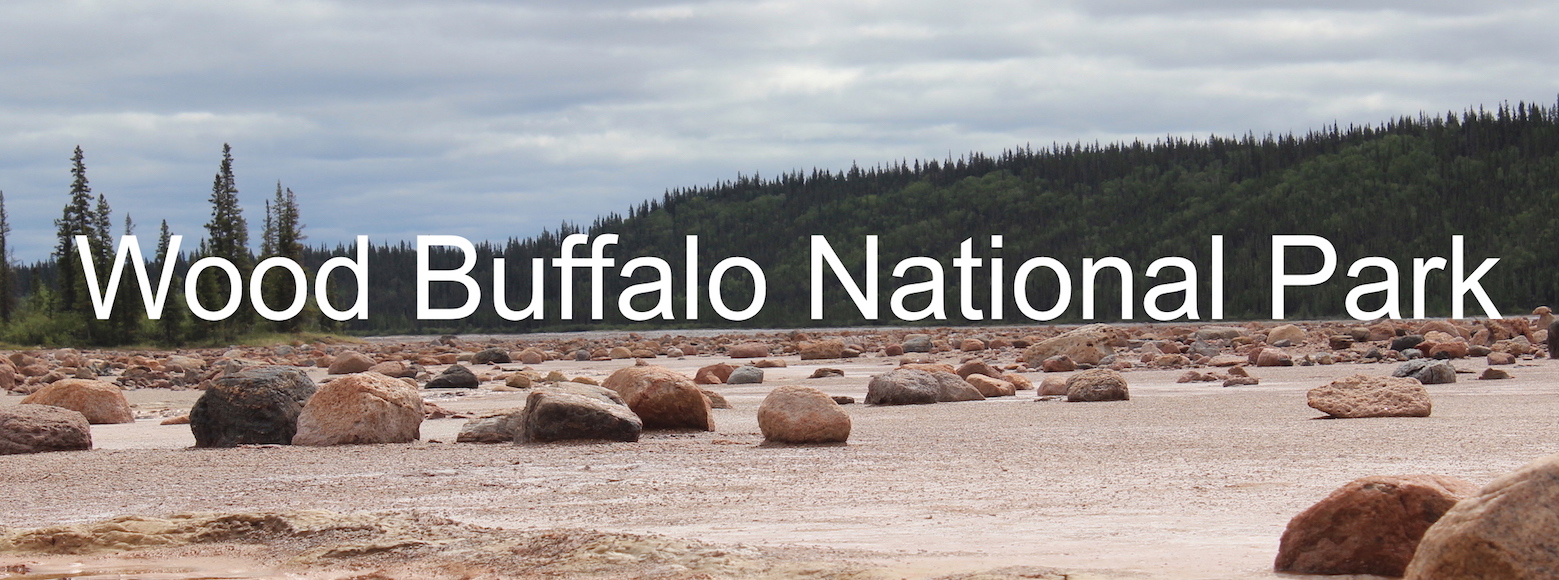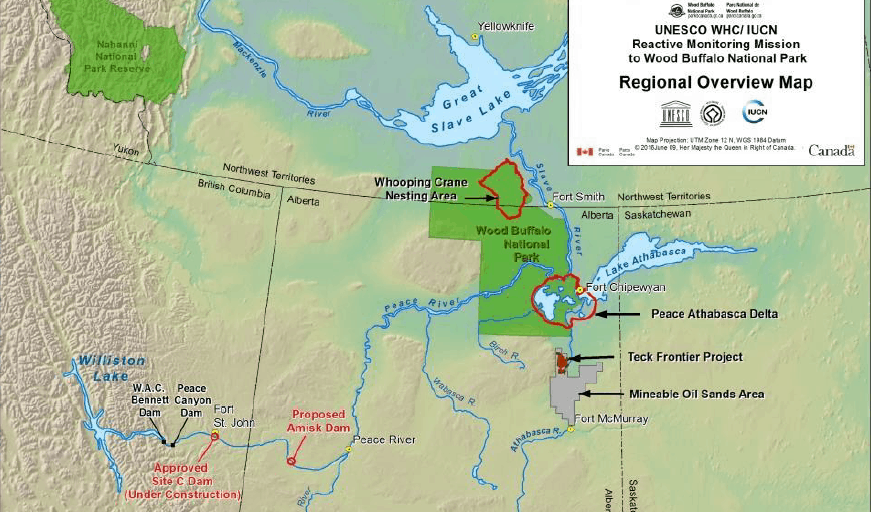
Wood Buffalo National Park is Canada’s largest national park and the fifth largest in the world. It spans nearly 45,000 sq-km across the NWT and Alberta. It contains a unique mosaic of wild places, including salt plains, wetlands, grasslands, and boreal forest. It also sustains many wild species, including the largest wild herd of Wood Bison, endangered Whooping Cranes, woodland caribou, and hundreds of thousands of migratory birds.
Wood Buffalo- A World Natural Heritage Site at Risk
From the many nearby industrial projects to the threat of losing UNESCO World Heritage status, Wood Buffalo National Park faces many challenges. CPAWS-NWT is working to confront these challenges and preserve the ecological integrity of Wood Buffalo National Park.
The NWT is and will continue to see disproportionately high negative impacts due to climate change and certain industrial developments will only serve to exacerbate these impacts while also posing severe and irreversible risks to NWT waters. Upstream industrial activities in Alberta alter water flow and introduce contaminants into the Peace, Athabasca, and Slave River watersheds which flow into the NWT. For this reason, downstream cumulative impacts must be accounted for in the decision making process for activities in Alberta.
You can find our past submissions and letters here, and recent news articles below.
Learn more about Wood Buffalo National Park and the threats facing it here. CPAWS-NWT and CPAWS Northern Alberta as a collaboration submitted letters to UNESCO’s World Heritage Committee regarding concerns around the implementation of the Wood Buffalo Action Plan. More recently, the Minister of Environment and Climate Change Jonathan Wilkinson announced that $59.9 million will be committed for the implementation of the Action Plan. You can read more about this here.
![CPAWS NWT Logo [Transparent Background] CPAWS NWT](https://cpawsnwt.org/wp-content/uploads/2018/09/CPAWS-NWT-Logo-Transparent-Background.png)

